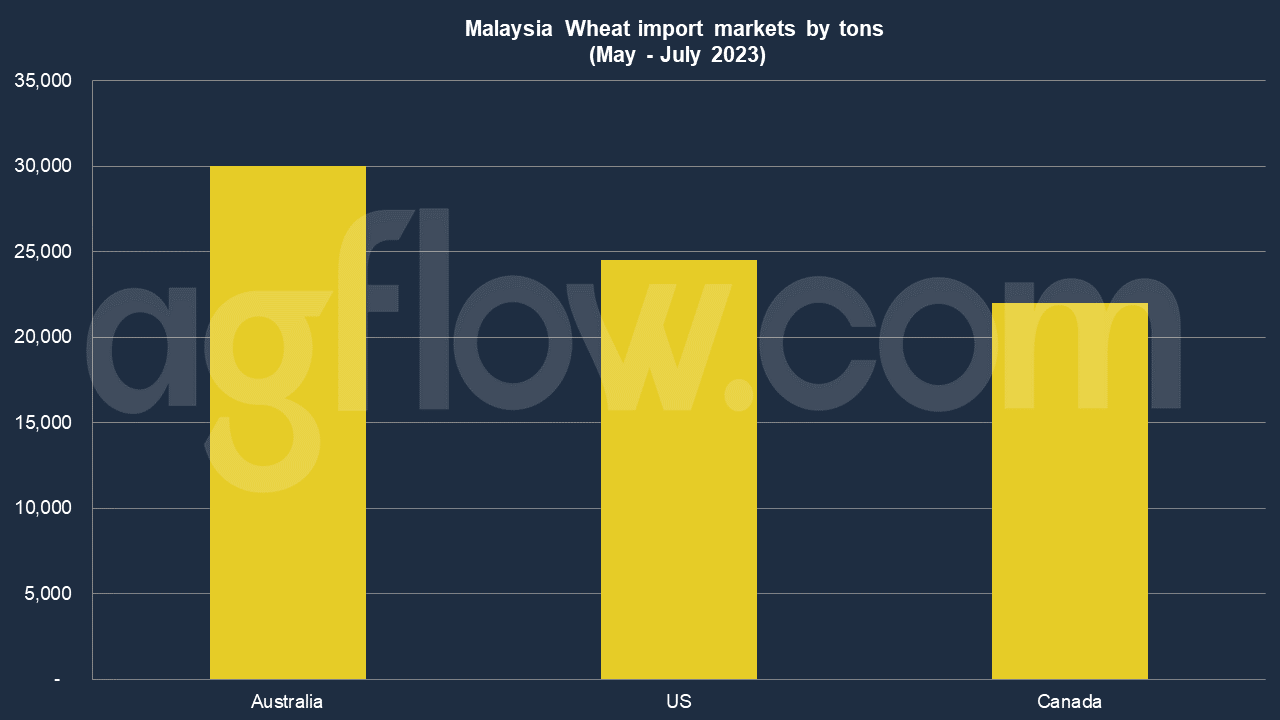The US Ships Small Amounts of Wheat to Malaysia
Talk to our team about AgFlow's offering →
Reading time: 2 minutes
Wheat, the golden grain that fuels our daily lives, has a unique story in Malaysia. But what’s behind the curtains of the wheat trade in this Southeast Asian nation? Let’s dive into the intricate web of export and import, and explore the challenges and tradeoffs that define the wheat market in 2023.
The Wheat Landscape in Malaysia
Malaysia, a country known for its vibrant culture and stunning landscapes, is also a significant player in the global wheat market. But why wheat? Isn’t rice the staple food here? Yes, but wheat has its own place on the Malaysian table.
Wheat is not just about bread and pastries; it’s a symbol of globalization and economic growth. Malaysia, not being a wheat-producing country, relies heavily on imports. So, where does all this wheat come from?
Import: A Flourishing Business
In the first half of 2023, Malaysia’s wheat imports have seen a remarkable surge. The primary sources are countries like Australia, Canada, and the United States. But why this sudden increase? Is it just about satisfying the taste buds, or is there more to the story?
The answer lies in the delicate balance of economics, politics, and climate. With the global economy recovering from the pandemic, the demand for wheat products has soared. Moreover, favorable trade agreements and the need to diversify food sources have contributed to this growth.
But what about the challenges? Importing wheat means relying on international markets, fluctuating prices, and political stability. It’s like walking on a tightrope; one wrong move, and the balance can be lost.
According to AgFlow data, Malaysia imported 24,537 tons of Wheat from the US in May -July 2023, followed by Australia (30,000 tons) and Canada (22,000 tons). Total imports hit 0.3 million tons in Jan-July 2023. Malaysia was purchasing large amounts of Wheat from Canada and Australia, such as 60,500 tons, and 60,000 tons, respectively. The US ships mostly smaller amounts of wheat, between 24 – 490 tons, to Malaysia.
February shipments were the largest in Jan – July of 2023, with 0.14 million tons. The following months were Apr (60,500 tons), May (53,274 tons), March (36,381 million tons), July (22,161 tons), and Jan (1,909 tons).

Export: A Hidden Gem
While Malaysia is primarily an importer of wheat, there’s a lesser-known side to the story – the export of wheat products. Flour mills in Malaysia are not just grinding wheat for domestic consumption; they are also crafting products for international markets.
The export of wheat-based products, such as noodles and biscuits, has seen a steady rise in 2023. It’s like turning straw into gold; raw wheat is transformed into value-added products, creating a niche in the global market.
But again, it’s not all smooth sailing. The challenges of quality control, international standards, and competition are like hurdles in a race. Can Malaysia keep up the pace?
Balancing Act: Tradeoffs and Challenges
The wheat trade in Malaysia is a complex dance of economics, politics, and innovation. On one hand, there’s the need to secure a stable wheat supply; on the other, there’s the ambition to carve a place in the global market.
It’s like balancing on a seesaw; too much focus on one side can tip the balance. The tradeoffs between relying on imports and fostering exports, quality and quantity, and innovation and tradition are all part of this intricate dance.
Conclusion: A Grain of Truth
The story of wheat in Malaysia is not just about numbers and trade agreements; it’s a reflection of a nation’s growth, aspirations, and challenges. The wheat trade in 2023 is a mirror of the global trends, local needs, and the delicate balance that defines our interconnected world.
So, the next time you enjoy a piece of toast or a bowl of noodles, remember, there’s a world of complexity, innovation, and ambition behind that simple grain. Malaysia’s wheat story is a testament to human ingenuity, resilience, and the never-ending quest for growth.
Try AgFlow Free
Access Free On Updates for Corn, Wheat, Soybean,
Barley, and Sunflower Oil.
No Credit Card Required & Unlimited Access In Time

